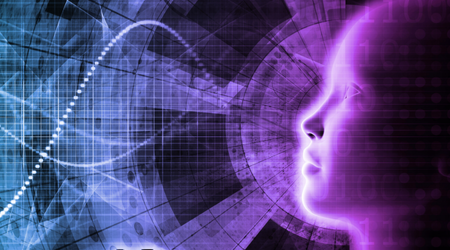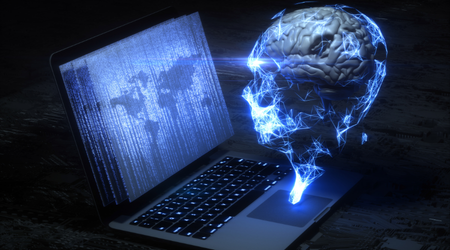The Role of Virtual Reality in Disaster Preparedness and Training

In an era where natural and man-made disasters are increasingly frequent and complex, virtual reality in disaster preparedness and training has emerged as a transformative tool.
By immersing users in hyper-realistic, high-stakes scenarios, VR equips first responders, emergency planners, and even civilians with the skills needed to act decisively during crises.
This technology is not just a futuristic concept—it’s a practical solution being adopted globally to enhance readiness and resilience.
From earthquake simulations to pandemic response drills, VR is redefining how we prepare for the unexpected.
The urgency for innovative training methods is clear. According to the United Nations, disaster frequency has increased fivefold over the past 50 years, with climate change exacerbating risks.
Traditional training methods, while valuable, often fall short in replicating the chaos and unpredictability of real-life emergencies.
This is where virtual reality in disaster preparedness and training shines, offering a dynamic, immersive, and scalable alternative.
Why Virtual Reality is Revolutionizing Disaster Training
Traditional disaster drills, though useful, often lack the intensity and unpredictability of real-life emergencies.
Enter virtual reality in disaster preparedness and training, which bridges this gap by simulating high-stress environments with unparalleled realism.
From earthquake evacuations to chemical spill responses, VR creates a safe space for trial and error, allowing trainees to learn from mistakes without real-world consequences.
A 2024 study by the International Disaster Response Institute found that VR-trained responders made 40% fewer errors during real-life emergencies compared to those trained conventionally.
This statistic underscores VR’s potential to save lives and improve outcomes.
For example, firefighters using VR simulations can practice navigating smoke-filled buildings, while medical teams can rehearse triage procedures in mass casualty scenarios.
Moreover, VR’s adaptability makes it suitable for a wide range of disasters. Whether it’s a hurricane, terrorist attack, or industrial accident, the technology can be tailored to specific threats.
This flexibility ensures that training remains relevant and effective, regardless of the disaster type.

Immersive Learning: A New Paradigm
Imagine practicing a tsunami evacuation in a coastal town or navigating a wildfire-ravaged forest—all from a controlled environment.
VR’s immersive nature fosters muscle memory and decision-making skills, critical in high-pressure situations.
Unlike traditional methods, virtual reality in disaster preparedness and training adapts to individual learning curves.
For instance, a firefighter can repeatedly practice rescuing victims from a collapsing building until the actions become second nature.
The psychological impact of VR cannot be overstated. By replicating the sights, sounds, and even smells of a disaster, VR prepares trainees for the sensory overload they may experience in real life.
This level of immersion is impossible to achieve with tabletop exercises or classroom lectures.
Additionally, VR allows for scenario variation. Trainees can face different challenges each time, such as changing weather conditions, evolving fire patterns, or unexpected obstacles.
This variability ensures that responders are prepared for the unpredictable nature of disasters.
+The Role of Gamification in Early Childhood Education: Unlocking Potential Through Play
Cost-Effectiveness and Scalability

While VR technology requires an initial investment, its long-term benefits outweigh the costs.
Traditional drills often involve logistical challenges, such as securing locations, coordinating participants, and procuring equipment. VR eliminates these hurdles, making training scalable and accessible.
For example, rural communities with limited resources can now access high-quality disaster training through VR platforms.
This democratization of preparedness is a significant step toward global resilience.
Governments and organizations can also save on recurring costs associated with traditional drills, such as venue rentals and personnel expenses.
Furthermore, VR’s scalability makes it ideal for large-scale training initiatives.
Emergency response teams across different regions can participate in the same simulation, ensuring consistency in training standards.
This is particularly valuable for cross-border disasters, where coordinated responses are essential.
Enhancing Collaboration and Communication

Disaster response hinges on seamless teamwork. VR fosters collaboration by allowing multiple users to interact within the same virtual environment.
Firefighters, paramedics, and police officers can train together, refining their coordination and communication skills.
For instance, during a simulated earthquake, a firefighter might need to communicate with a paramedic to prioritize rescues, while a police officer manages crowd control.
These interactions mirror real-life dynamics, ensuring that teams are prepared to work together under pressure.
Moreover, virtual reality in disaster preparedness and training can simulate cross-border disasters, such as pandemics or cyberattacks, enabling international teams to practice joint responses.
This global approach is crucial in an interconnected world where disasters often transcend national boundaries.
+Smart Home Automation for Beginners: Where to Start
Real-World Applications
- Earthquake Preparedness: VR simulates aftershocks, structural collapses, and evacuation routes, helping users navigate chaotic scenarios. For example, in Japan, VR is used to train citizens on how to react during earthquakes, a frequent threat in the region.
- Chemical Spills: Trainees practice containment and decontamination procedures without exposure to hazardous materials. Industrial facilities in the U.S. have adopted VR to prepare workers for potential accidents.
- Medical Emergencies: VR replicates mass casualty incidents, allowing healthcare workers to triage patients efficiently. During the COVID-19 pandemic, hospitals used VR to train staff on infection control and patient management.
These examples highlight VR’s versatility and its ability to address diverse disaster scenarios. By providing hands-on experience in a risk-free environment, VR ensures that responders are ready for any situation.
Table 1: Comparison of Traditional vs. VR-Based Disaster Training
| Aspect | Traditional Training | VR-Based Training |
|---|---|---|
| Realism | Limited | High |
| Cost | Moderate to High | High Initial, Low Long-Term |
| Accessibility | Location-Dependent | Global |
| Adaptability | Fixed Scenarios | Dynamic and Customizable |
Challenges and Ethical Considerations
Despite its potential, VR faces challenges. High costs, technological limitations, and accessibility issues persist.
For instance, not all regions have the infrastructure to support advanced VR systems. Additionally, over-reliance on simulations may lead to complacency in real-life situations.
Ethical concerns also arise. For example, how realistic should trauma-inducing scenarios be? Striking a balance between realism and psychological safety is crucial.
Trainees must be challenged without being overwhelmed, ensuring that the experience is both educational and humane.
Another consideration is data privacy. VR systems often collect biometric data, such as heart rate and stress levels, to personalize training.
Ensuring that this data is securely stored and used ethically is paramount.
The Future of VR in Disaster Training
As VR technology advances, its applications will expand. AI-driven simulations could adapt in real-time, creating dynamic scenarios that evolve based on user decisions.
For example, an AI could introduce unexpected obstacles, such as a blocked evacuation route, to test a trainee’s problem-solving skills.
Furthermore, integrating biometric feedback—such as heart rate and stress levels—could personalize training, ensuring users remain calm under pressure.
This data-driven approach would allow trainers to identify areas for improvement and tailor exercises to individual needs.
The integration of augmented reality (AR) is another exciting possibility. AR could overlay virtual elements onto the real world, enabling hybrid training scenarios.
For instance, responders could practice in their actual environment while interacting with virtual hazards.
++The Future of Smart Homes: What to Expect in 2025 and Beyond
Table
Table 2: Key Benefits of VR in Disaster Preparedness
| Benefit | Description |
|---|---|
| Immersive Learning | Enhances retention and decision-making skills |
| Safe Environment | Allows practice without real-world risks |
| Scalability | Accessible to diverse groups, regardless of location |
| Collaboration | Improves teamwork and communication among responders |
The Role of Governments and Organizations
Governments and organizations play a crucial role in advancing virtual reality in disaster preparedness and training.
By investing in VR technology, they can enhance national and global resilience. Public-private partnerships can also drive innovation, making VR more affordable and accessible.
For example, the U.S. Federal Emergency Management Agency (FEMA) has integrated VR into its training programs, focusing on hurricane and flood response.
Similarly, the World Health Organization (WHO) has used VR to train healthcare workers in disaster-prone regions.
These initiatives demonstrate the potential of VR to transform disaster preparedness on a large scale. By prioritizing this technology, governments and organizations can build a safer, more resilient future.
Conclusion
Virtual reality in disaster preparedness and training is not just a technological novelty—it’s a necessity.
By offering immersive, scalable, and cost-effective solutions, VR is transforming how we prepare for disasters.
From enhancing individual skills to fostering global collaboration, this technology is redefining resilience.
As we move forward, addressing challenges and ethical concerns will be paramount. However, the potential to save lives and build resilient communities makes VR an indispensable tool in our disaster response arsenal.
In a world where the unexpected is becoming the norm, embracing virtual reality in disaster preparedness and training is not just wise—it’s imperative.
Frequently Asked Questions (FAQs)
1. How does VR improve disaster preparedness?
VR provides immersive, realistic simulations that enhance decision-making, muscle memory, and teamwork, ensuring responders are better prepared for real-life emergencies.
2. Is VR training cost-effective?
While the initial investment is high, VR reduces long-term costs by eliminating the need for physical resources and enabling scalable, repeatable training.
3. Can VR be used for all types of disasters?
Yes, VR can be tailored to simulate various disasters, including earthquakes, floods, pandemics, and industrial accidents.
4. What are the ethical concerns with VR training?
Key concerns include balancing realism with psychological safety, ensuring data privacy, and avoiding over-reliance on simulations.
5. How accessible is VR training?
While accessibility is improving, challenges remain in regions with limited technological infrastructure. Efforts are underway to make VR more widely available.
6. What’s the future of VR in disaster training?
Advancements in AI, biometric feedback, and augmented reality will make VR training even more dynamic, personalized, and effective.
